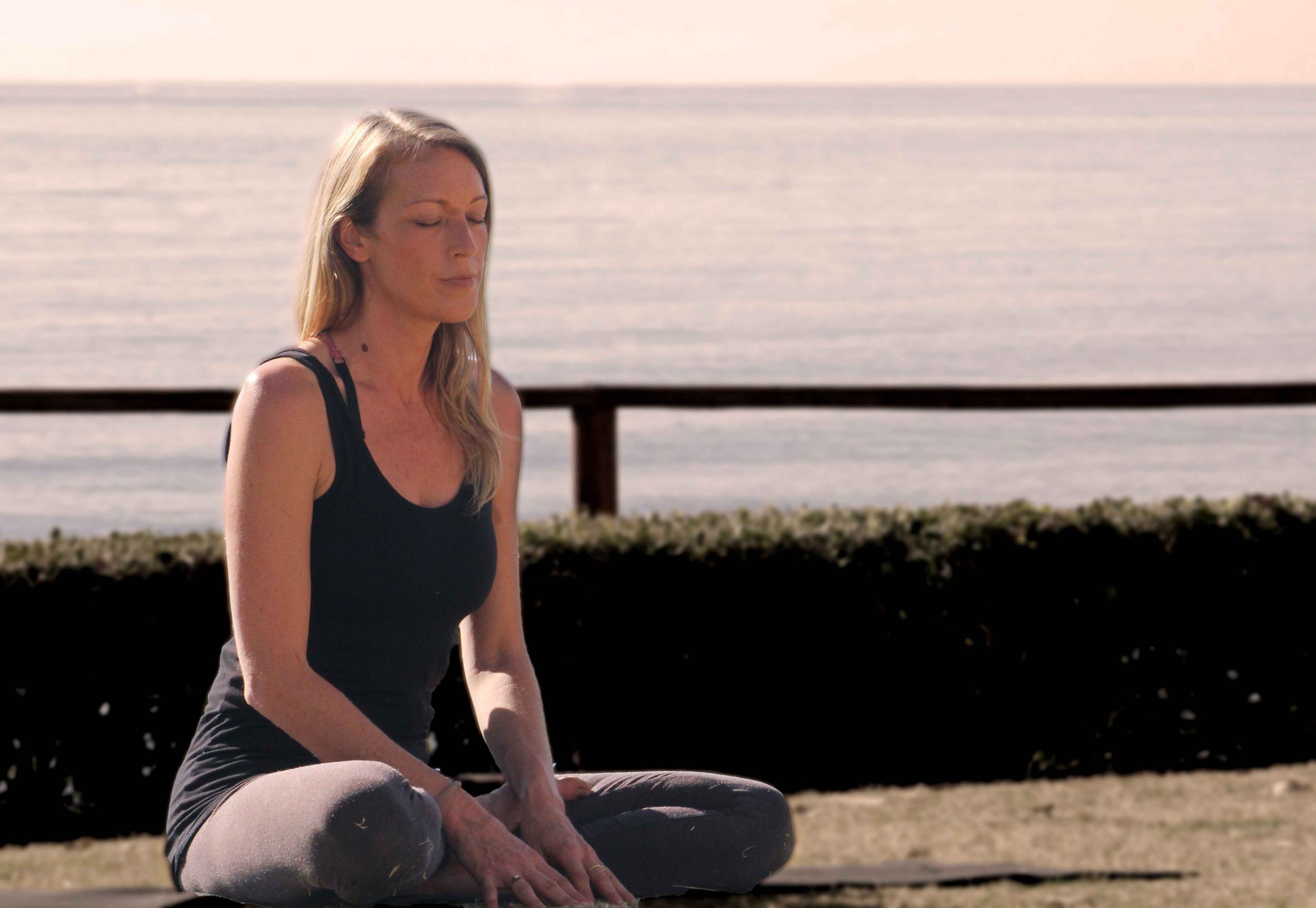Breathing or Breathwork?
You might have heard of the term “Breathwork”, especially if you’ve taken a yoga class before. But how is breathing work? It’s easy, right? Inhale, exhale, repeat. We do it all the time. We don’t have to think about it and the air just keeps coming in & going out.
But what about if we do think about it. What if we make it conscious? When we do, we are practising “Breathwork” – or, as it’s known in Sanskrit, pranayama. There are a lot of benefits to conscious breathwork but first, let’s try it.
Breathwork Exercise #1
Conscious Breath
1) Sit up straight.
2) Relax your jaw & shoulders.
3) Take a gentle, deep breath in through your NOSE.
4) Follow with a long, slow breath out through your MOUTH.
And there you go – that’s one mindful, conscious breath!
Your yogic breathwork journey has begun.
Normal v Full Yogic Breath
If you’re a singer, athlete or someone dealing with asthma, you may already have a relationship with deep breathing. However, for many of us, our normal breath tends to be shallow, barely filling our lungs.
We can easily change this by continuing to consciously inhale deeper. A full exhalation removes not just this extra air taken from our deeper breath in, but also residual air left in the lungs. And guess what? The next deep inhalation becomes even more expansive! Through this intentional deep breathing, you create space to take in up to seven times more breath. Let’s try it!
Breathwork Exercise #2
Full Yogic Breath
(aka Belly Breath & Diaphragmatic Breathing)
1) Sit up straight or lie down.
2) Keep your jaw & shoulders relaxed.
3) As you take a gentle, deep breath in through your nose….
(i) Let your ribcage expand
(ii) Allow your belly to expand &
(iii) Feel the diaphragm draw downward – like a gentle bellows inflating your lungs to their maximum capacity.
5) Breathe out (through the mouth or nose) & contract your abdomen slightly at the end of the exhale, squeezing out even more air than usual.
6) Repeat
The Breathing Paradox
Breathing is an autonomic function – something that happens whether we think about it or not. It’s usually effortless – involuntary – whether we’re awake or asleep. Paradoxically, this means that it can often be the trickiest part to get the hang of, especially in your first few yoga classes.
With so much new information to take in – and because our brain is going to make sure we keep breathing, regardless – our attention often goes elsewhere. Especially if your teacher is fond of throwing around some Sanskrit names and peppering in some Philosophy, Anatomy, Biomechanics, Kinesiology, Psychology, Sociology, Quantum Physics… (the list goes on: yoga integrates all of these things!).
So, if you’re in a yoga class and you lose awareness of your breath, don’t worry, it’s completely normal. When you remember, come back to it. It’s pretty magical and its effects on the body & mind are scientifically documented.
Breath is Life.
Benefits of Breathwork
Deep, conscious breathing is just one type of pranayama practised in Yoga. It’s a great place to start & a gateway to a treasure trove of well-being. Here are some of the remarkable benefits of this type of breathwork:
Increased Endurance: Oxygen floods the body, enhancing stamina and endurance.
Better Digestion: Conscious breathing can benefit your digestive system by creating a massage onto – & increasing blood flow to – the digestive organs.
Strengthened Immune System: Oxygen-rich blood supports immune function, helping your body ward off issues and stay resilient.
Detoxification of the Body: Deep breaths help facilitate the removal of waste products, promoting overall health.
Mental Clarity: Oxygen nourishes the brain, sharpening focus and mental clarity. It’s like opening a window in a stuffy room.
Relaxation: Slow, deliberate breath activates the parasympathetic nervous system, reducing stress hormones like cortisol.
Pain Management/Reduction: Breathing techniques are natural pain management tools.
Massage for the Organs: Deep breaths gently massage internal organs, promoting circulation and vitality.
Improved Posture: Mindful breathing encourages awareness of your body, leading to better posture and alignment.
Stronger Heart and Lungs: Efficient breathing supports cardiovascular health.
Increased Energy Levels: Oxygen is the ultimate energy source. Breathe deeply, and vitality follows.
Happiness: By increasing pleasure-inducing neurochemicals in the brain, conscious breathing contributes to overall happiness and well-being.
So, whether you’re on a yoga mat or simply pausing during your day, embrace the power of your breath. It’s not just air; it’s medicine.
Breathe On
Just 5 minutes of deep, conscious breathing each day – or even just 5 deep breaths! – can make a huge difference. Try it and enjoy the immediate benefits of breathwork.
And don’t stop there. Make it a habit. Consistency is the magic ingredient. As you weave conscious breathing into your days, watch the ripple effect. Stress eases, focus sharpens, and vitality blooms. It’s not just about the present moment; it’s an investment in your well-being.
If you’ve mastered the breathwork exercises above, try the progression: The Three Part Breath. And if you’re interested in the scientific studies surrounding yoga as medicine, check out Yoga: Modern Medicine is Catching Up
Breathe on & let each breath be a gift to yourself – a reminder that within this simple act lies a reservoir of resilience and renewal.

Adapted from a piece originally written for & published on the Things 2 Do Marbella website August 2016. Updated March 2024.
Jeannette Amy (Nette) Hopkinson (BSc Hons Sports & Life Sciences) is a compassionate, trauma-informed Yoga Teacher & educator based in Andalusia. Follow on Instagram & Facebook




